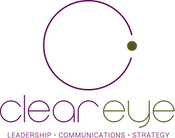
“It sounds really simple but most people don’t do it, work on your priorities.”
Don’t let your inbox hijack you
We’ve all had those days when you arrive at the office, all set to tackle your to-do list but then one glance at your email sets you off on a different course for the day.
It’s a common problem, according to productivity expert Ciara Conlon.
“People spend their day reacting. They open their inbox in the morning and start reacting to what’s in it,” she said.
Always-on culture
According to Conlon, a leadership coach who wrote Author of Chaos to Control and Productivity for Dummies, the key to a more productive workday is making a plan and, as much as possible, sticking to it.
“It sounds really simple but most people don’t do it,” she said. “Work on your priorities.”
Technology has enabled us to work in different ways, but the ‘always-on’ culture and the feeling of constant busyness doesn’t necessarily make us more productive.
Productivity, experts say, is all about focus.
Busyness is a foe not a friend
Speaking to the Harvard Business Review on the secrets of productivity, UC Berkeley sociologist Christine Carter said that busyness is potentially more negative than positive. “Busyness is not a marker of intelligence, importance, or success. Taken to an extreme, it is much more likely a marker of conformity or powerlessness or fear,” she said.
Busyness can lead to feeling overwhelmed, and losing sight of what you actually need to work on and want to achieve.
Simple steps can make your workday a more productive one, though.
Start with your calendar not your inbox
“Change your outlook settings,” Conlon said. “Open it on your calendar not your inbox.”
This will help you to start each day thinking about what’s on your agenda for the day. Don’t just use the calendar to schedule meetings and calls, however. Instead, use it to schedule your own work too.
“Make appointments with yourself. Prioritise your tasks, and schedule them. What gets scheduled tends to get done,” Conlon said.
Bear in mind that “email isn’t work”, Conlon said. “Have a plan, open your emails and scan them. Open them three or four times a day.”
Avoid pointless meetings
Emails might be one productivity sucker in most offices, but there’s another culprit too. Meetings. Especially the variety that drag on with no clear objective.
Figures from software company Atlassian indicated that US employees spend 31 hours in pointless meetings each month.
“Even the most forward-thinking organisations make the same mistakes,” Conlon said. “What’s the goal of the meeting? It’s not about bringing people into a room but about what you want to achieve.”
Having a clear goal is a good way to shave time off a meeting
A simple statement of what you hoped to achieve at the meeting can reduce its length by an average of 17 minutes, according to figures cited in Forbes.
Another way to keep meetings to the point is to keep people on their toes. Literally. “A lot of younger companies do stand-up meetings. That takes less time,” Conlin said.
However, in a piece published last year, the Harvard Business Review cautioned that stand-up meetings weren’t for everyone.
“While it’s hard to argue with the success of agile tactics, it’s worth spending a moment to question the wisdom of an organisation adopting stand-up meetings on a widespread basis,” the HBR warned. “They don’t work for all interactions, and as with anything, treating them as a one-size-fits-all solution can have unintended consequences.”
If you find it hard to be productive at your desk, due to emails, meetings and other interruptions, Conlon suggests removing yourself from the situation, if possible. “Work from home if you can or go to a meeting room,” she said.
Finding a way to be productive in a busy office environment is a question of balance. “It’s a balance between pushing back to allow you to focus on your goals, and not coming across as unhelpful,” she said. “Politely push back and clear your workload.”
